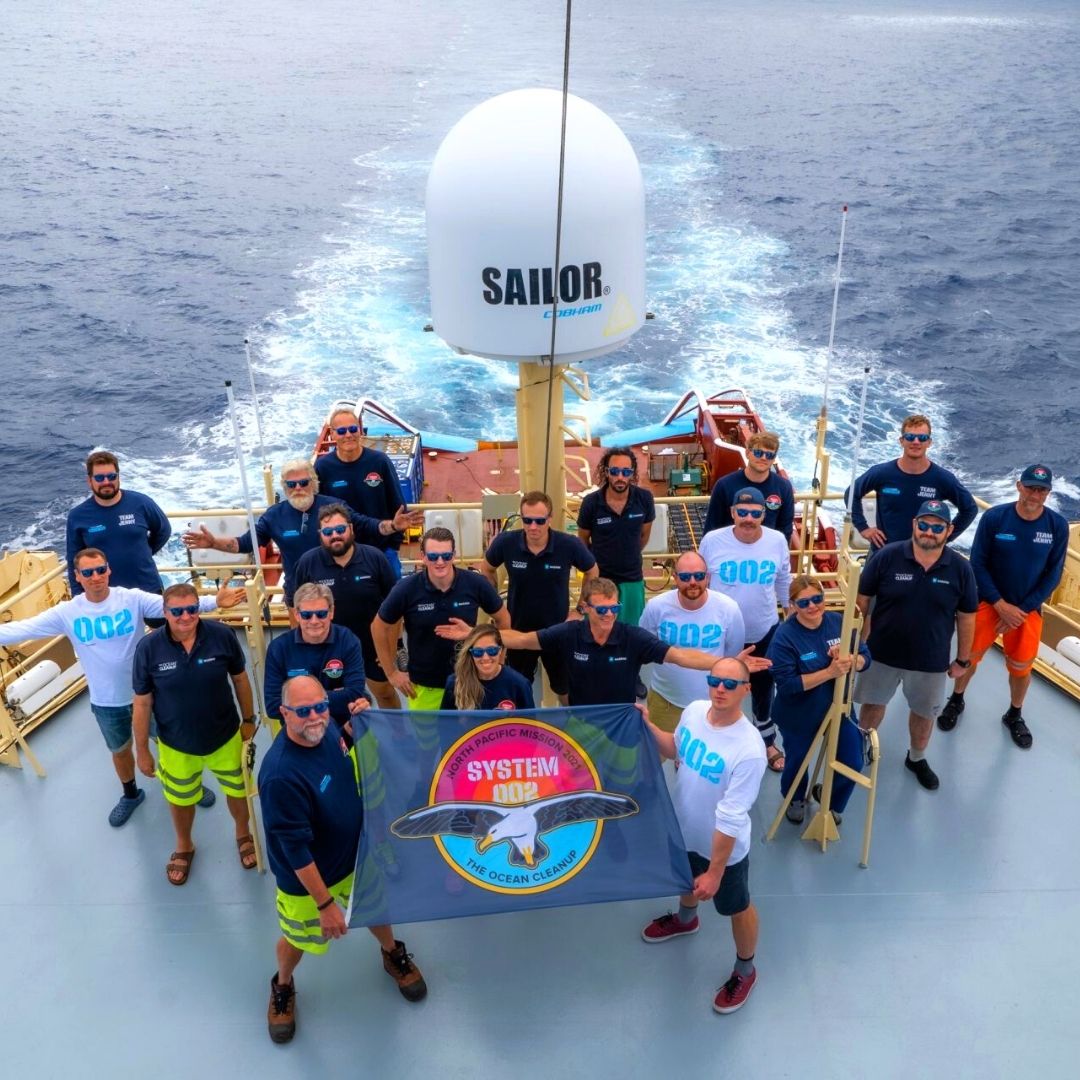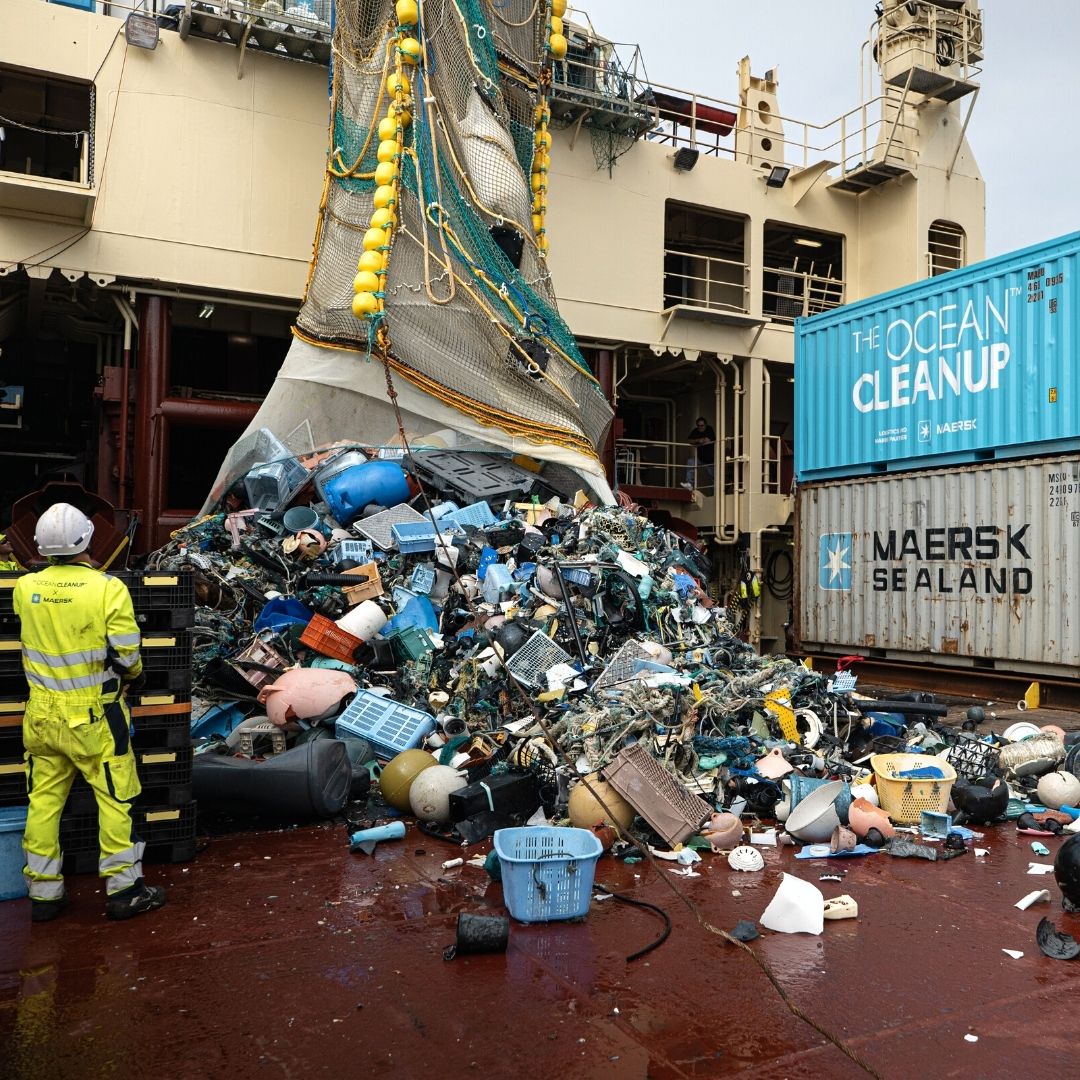On a recent voyage — System 002, nicknamed ‘Jenny’ — hauled more than 9,000 kilograms of marine debris from the ocean! After witnessing the success of this oceanic cleaning device, experts from The Ocean Cleanup now believe that cleaning up the Great Pacific Garbage Patch is entirely possible.


New Hope For The Great Pacific Garbage Patch
As the Great Pacific Garbage Patch grows in size year after year, it can be hard to remain hopeful that it’ll ever be cleaned up. But now, thanks to a piece of breakthrough technology by The Ocean Cleanup — the Great Pacific Garbage Patch may become a thing of the past.
System 002, is an 800m U-shaped installation that’s capable of funneling pieces of marine debris into its net. It’s the latest design by The Ocean Cleanup; a not-for-profit with a goal to clean up 90% of floating ocean plastic by 2040.
On Instagram, @theoceancleanup shared the exciting news: “October 8th, 2021: the final test extraction of System 002, and the moment we knew that cleaning the Great Pacific Garbage Patch is possible”.
How Does System 002 Work?
System 002 is the successful result of years of research and failed prototypes by the experts at The Ocean Cleanup. It all begins with identifying where the currents are pulling the plastic. From there, System 002 is placed in the plastic hotspots to maximise collection. To guide the plastic into the funnel-shaped net, System 002 is pulled along by 2 boats.
Once the net is full, it’s tied off and loaded onto the back of the nearby boats. Then, the cleanup continues! The masses of plastic are brought back to shore, separated into appropriate waste streams, and recycled into awesome new products.
In early October, The Ocean Cleanup took System 002 out for its final test extraction. In a single trip, the device caught 9,000 kilograms of marine debris — how amazing is that!


Does System 002 Harm Marine Life?
It’s important to mention that System 002 has a negligible impact on marine life! Obviously, the idea of a massive net being pulled by two boats rings alarm bells — but the main purpose is to guide the installation and load up trash.
The net itself moves at around 1.5 knots, which gives marine life ample time to swim under or around the net. To make it extra safe, The Ocean Cleanup installed escape routes and lights to guide disoriented animals out of the netting.
System 002 captures a wide variety of marine debris — from microplastics as small as 3mm, to fishing nets (ghost nets) more than 10m wide. Abandoned fishing nets make up around 46% of the Great Pacific Garbage Patch, so getting rid of these death traps is fantastic news for marine life.


How Long Will It Take To Clean Up The Great Pacific Garbage Patch?
The Great Pacific Garbage Patch is an ever-growing, swirling vortex of trash in the Pacific Ocean. It’s roughly three times the size of France, and most of the debris lies under the surface of the water. Tackling such a complex problem depends on stopping plastic flowing into the ocean and cleaning up the 5 trillion pieces of plastic already choking our oceans.
Dutch inventor and founder of The Ocean Cleanup, Boyan Slat, believes they would need to deploy ten System 002’s to clean up half of the Great Pacific Garbage Patch within five years! Then, with a fleet of System 002’s deployed into every ocean gyre, and efforts to stop ocean plastic at the source, The Ocean Cleanup estimates that 90% of floating ocean plastic could be removed by 2040.
As a non-profit, The Ocean Cleanup relies on funding and donations to operate System 002, sort through all the marine debris, and expand their fleet of ocean cleanup devices! Recently, they’ve developed a pair of 100% recycled sunglasses made from the marine debris they’ve collected. Purchasing just one pair of these sunglasses allows System 002 to clean an area of the Great Pacific Garbage Patch that’s equivalent to 24 football fields! To discover more ways to support this amazing not-for-profit, head to The Ocean Cleanup’s website.
For more fantastic ocean cleanup initiatives, head to our Eco News category and check out the blogs below!
This Sustainable, Floating ‘Continent’ Cleans Up Ocean Plastic
Greening Australia’s Reef Aid Program Celebrates Its 5-Year Anniversary!
These Recycled Plastic Belts Help Coastal Communities In Indonesia

